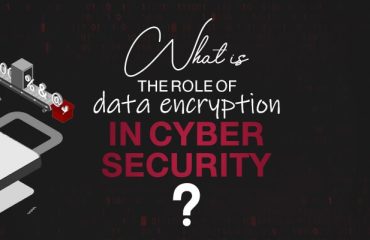
The rapid growth of e-commerce and the digital transformation of retail have revolutionized the way consumers shop, giving them the convenience of browsing and purchasing products from anywhere in the world. However, this digital shift has also made the retail sector a prime target for cybercriminals, eager to exploit vulnerabilities in online platforms and payment systems. As the retail and e-commerce industry continues to evolve, so does the sophistication of cyberattacks, making cybersecurity a critical priority for businesses operating in this space.
Why Cybersecurity Matters in Retail and E-Commerce
Retailers handle vast amounts of sensitive customer data, including personal information, payment card details, and purchasing habits. This makes them attractive targets for cyberattacks aimed at stealing data, disrupting operations, or extorting businesses. The consequences of a cyber breach in retail can be severe, ranging from financial losses and legal penalties to reputational damage that erodes consumer trust.
Key Factors Contributing to Retail Cybersecurity Risks:
- Volume of Data: Retailers collect and store massive amounts of customer data, making them valuable targets for hackers looking to steal identities or sell data on the dark web.
- Payment Systems: E-commerce platforms rely on secure payment gateways to process transactions, but any vulnerability in these systems can expose sensitive credit card information to attackers.
- Multiple Digital Channels: As retailers expand their presence across websites, mobile apps, and social media platforms, they introduce more points of vulnerability that can be exploited.
- Supply Chain Integration: Many retailers work with third-party vendors and partners, which increases the risk of supply chain attacks if these external entities are not properly secured.
Common Cybersecurity Threats in Retail and E-Commerce
Several types of cyber threats are especially prevalent in the retail industry, targeting both businesses and consumers. Understanding these threats is essential for developing effective cybersecurity strategies.
- Phishing and Social Engineering
Phishing attacks are a common tactic used to deceive employees or customers into revealing sensitive information such as login credentials or credit card numbers. Cybercriminals often impersonate legitimate entities, such as well-known brands or financial institutions, to lure victims into clicking malicious links or downloading malware. - Ransomware
Ransomware attacks involve encrypting a retailer’s data and demanding payment in exchange for its release. These attacks can cripple operations by locking retailers out of their own systems, halting sales, and disrupting supply chains. According to reports, ransomware attacks on the retail sector have increased significantly, with attackers targeting businesses of all sizes. - Payment Card Skimming
Payment card skimming involves cybercriminals stealing credit card details during the checkout process. Attacks such as Magecart inject malicious code into e-commerce websites to capture payment information as customers enter it. These attacks can go undetected for long periods, leading to widespread theft of financial data. - DDoS (Distributed Denial of Service) Attacks
A DDoS attack floods an e-commerce website with massive traffic, rendering it inaccessible to legitimate customers. The goal is to disrupt business operations, damage the retailer’s reputation, and in some cases, demand ransom payments to stop the attack. DDoS attacks can result in significant downtime and lost revenue. - Account Takeovers
Account takeover (ATO) attacks occur when hackers use stolen credentials to gain unauthorized access to customer accounts. Once inside, they can make fraudulent purchases, steal loyalty points, or change account details. ATO attacks have risen sharply as cybercriminals use techniques like credential stuffing (trying multiple username-password combinations) to infiltrate accounts.
Best Practices for Strengthening Cybersecurity in Retail
Retailers must adopt a proactive approach to cybersecurity to prevent breaches, protect customer data, and maintain trust in their brands. The following are key best practices for safeguarding e-commerce platforms and retail operations:
- Secure Payment Systems
Retailers should ensure that their payment systems comply with the Payment Card Industry Data Security Standard (PCI DSS), which sets guidelines for handling, processing, and storing credit card information. Encrypting payment data, using tokenization, and employing secure payment gateways can help protect customer information during transactions. - Multi-Factor Authentication (MFA)
Implementing MFA adds an extra layer of security by requiring users to provide multiple forms of verification (e.g., passwords, biometrics, or security tokens) before accessing accounts. This significantly reduces the risk of account takeover attacks, even if a user’s credentials are compromised. - Regular Security Audits and Penetration Testing
Conducting regular security audits helps retailers identify vulnerabilities in their systems before cybercriminals can exploit them. Penetration testing, in which ethical hackers attempt to breach a retailer’s defenses, is an effective way to find and fix weaknesses in both web applications and internal systems. - Encryption and Data Masking
Sensitive data, such as customer personal information and payment details, should be encrypted both in transit and at rest to ensure that it cannot be accessed by unauthorized parties. Data masking techniques can be used to hide specific details, such as displaying only the last four digits of a credit card number. - Employee Training and Awareness
Employees are often the weakest link in cybersecurity. Regular training on how to identify phishing emails, avoid social engineering attacks, and follow best practices for data protection can go a long way in reducing the risk of human error leading to a breach. - Monitoring and Threat Detection
Implementing real-time monitoring and threat detection systems, such as Security Information and Event Management (SIEM) tools, allows retailers to detect suspicious activity quickly. Early detection can help prevent minor issues from escalating into full-blown breaches. - Supply Chain Security
Retailers should ensure that their third-party vendors and suppliers follow robust cybersecurity practices. This includes vetting vendors for compliance with security standards, implementing strict access controls, and continuously monitoring third-party activities for potential threats.
The Future of Cybersecurity in Retail and E-Commerce
As technology continues to evolve, so too will the cybersecurity landscape in retail. Emerging technologies such as artificial intelligence (AI) and machine learning (ML) are poised to play a crucial role in enhancing cybersecurity defenses. AI-driven systems can help retailers detect anomalies in real-time, automate responses to low-level threats, and predict potential vulnerabilities based on past patterns.
Moreover, with the advent of 5G technology and the rise of Internet of Things (IoT) devices in retail environments, new challenges are emerging. Retailers will need to secure everything from smart payment terminals to connected devices in stores to ensure that they do not become entry points for cyberattacks.
Additionally, the integration of blockchain technology in supply chain management may provide new ways to enhance transparency and security in retail operations, reducing the risk of tampering or data manipulation.
Conclusion
In today’s digital economy, cybersecurity is not just an IT issue—it’s a business imperative. Retail and e-commerce businesses must prioritize cybersecurity to protect their customers, secure transactions, and preserve the integrity of their operations. By adopting a proactive approach to security, investing in advanced technologies, and continuously educating employees and customers, retailers can stay one step ahead of cybercriminals and ensure a safe, secure shopping experience for all.
As cyber threats become more sophisticated, the future of retail will be defined by those who successfully integrate strong cybersecurity practices into their core business strategies, fostering both consumer trust and long-term success in the digital marketplace.



